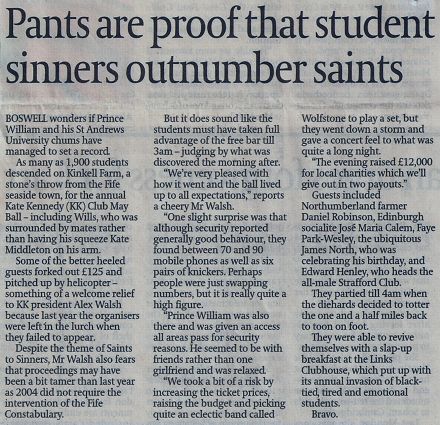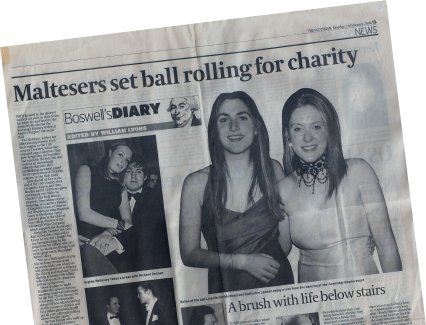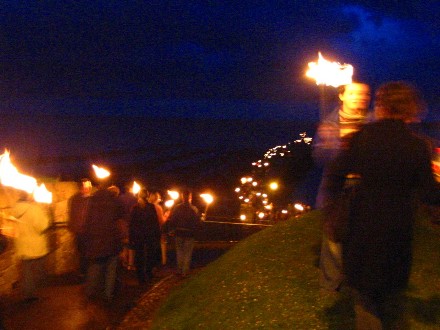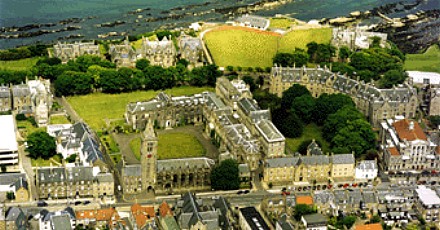Scotland
About Andrew Cusack
 Writer, web designer, etc.; born in New York; educated in Argentina, Scotland, and South Africa; now based in London.
Writer, web designer, etc.; born in New York; educated in Argentina, Scotland, and South Africa; now based in London. read more
News
Blogs
Reviews & Periodicals
Arts & Design
World
France
Mitteleuropa
Knickerbockers
Argentina
The Levant
Africa
Cape of Good Hope
Netherlands
Scandinavia
Québec
India
Muscovy
Germany
Academica
Which Scots conservatism?
FOR THOSE WHO haven’t been keeping up with Caledonian affairs, Scottish independence has been brought onto the agenda by the victory of the anti-unionist, pro-independence Scottish National Party in the general election for the Scottish Parliament last year. The SNP victory comes after about half a century of solid domination of Scottish politics by the Labour party (now in regional opposition in Edinburgh, but still in power at the British parliament in Westminster). Yet an important portion of the electorate, while willing to vote the SNP into power — or at least to vote Scottish Labour out of power — have proved more reticent when it comes to the actual matter of ending the 300-year union between England and Scotland. While the SNP is riding high in Holyrood (the seat of the Scottish Parliament), support for Scottish independence is at its lowest since the discovery of North Sea oil.
This may seem like something of a contradiction, but Scottish voters are just trying to make the best of a tricky situation. Labour have proved unpopular both for national reasons (the war in Iraq particularly and Tony Blair in general) and for local reasons (Scottish Labour’s mismanagement during ten years in power at Holyrood and the presumption the Labour clique have that they are Scotland’s natural rulers and how dare anyone think otherwise). Of the five parties in the Scottish Parliament, the Nationalists are the only purely Scottish party — with Labour, the Conservatives, the Liberal Democrats, and the Greens all having either superior (or in the Greens’ case, co-equal) bodies in London. The best way of kicking out Labour was to vote SNP, and enough Scots thought it was worthwhile this time around.
That the Nationalists are a broad-based party has proved a great advantage. Beyond the central issue of their proposal to make Scotland independent, the SNP’s policies are, roughly-speaking, pro-business center-left. At the same time, their student federation is officially socialist, and they receive a fair amount of conservative support because conservatives tend to of a somewhat nationalist strain — and because the Scottish Conservatives give the appearance that they are more than comfortable to simply sit in Holyrood, collect their parliamentary salaries, and twiddle their thumbs. The Conservatives have always been a London-centric party anyhow, and under David Cameron it has become even more clear that it is a rural conservative party which exists in the hope of placing respectable metropolitan liberals in power. Faced with the choice of three liberal parties — the SNP, the Lib Dems, and the Conservatives — and pseudo-socialist Labour, Scots have made a sensible decision by choosing the liberal party which cares most for Scotland: the Nationalists.
But what, again, of this divergence: a party in government for which independence is its foremost purpose and a people who still seem content on (in some shape or form) maintaining the Union? Some in the opposition parties have seen an opportunity in this contradiction and have called for a referendum on independence to be held now; independence would almost (but only almost) certainly be defeated. Wendy Alexander, the Scottish Labour leader, surprisingly lent her support this idea before being forced by her superiors in London to issue a “clarification” opposing the idea. Those who support the continued union between Scotland and England, Wales & Northern Ireland would be wise to push for a referendum at the nearest moment and pull the rug from beneath the independence lobby.
But is the Union worth preserving? Ought conservative Scots to support the continuation of the Union or a move to independence? A unionist conservative might claim that by our very nature as conservatives we ought to support the status-quo and be wary of such far-reaching radical ideas such as ending three centuries of union. To which, of course, the nationalist conservative replies by asking why Scotland should be ruled by a London-based government intent on social and cultural revolution and the overthrow of all tradition. To which the unionist conservative replies that an independent Scottish government is just as likely to be the enemy of all that is good and holy as the London government. And so on and so forth.
Right-thinking Scots who condescend to involve themselves in politics are currently divided between two political parties — the Scottish Nationalists and the Scottish Conservatives — and that this hampers the cause of tradition, order, and liberty in Scotland.
What, then, should be done? The Scottish Conservative party is an inherently flawed vehicle for the advancement of conservatism in Scotland. The party itself only dates to 1965; before then there was a loose association of unionist elected officials who ran under various banners — Liberal Unionist, Scottish Unionist, Progressive, Independent, National Liberal, etc. It was only in that year that the Scottish Unionist Association decided to become the Scottish Conservative & Unionist Party, the official Scottish branch of the (traditionally English) Conservative & Unionist party. The fortunes of the Scottish Conservatives have gone downhill ever since, and there is a very strong cultural bias (sometimes even hatred) of “the Tories” in general that hurts the Scottish party.
There are two main options at hand. The first is that the Scottish Conservatives completely divorce themselves from the English & Welsh party, undergo a complete “re-branding” and transformation. The Conservative name will have to be dumped and there must be a clear indication that the party’s officials are willing to put Scotland’s interest first and foremost both at Westminster and in Holyrood. The disadvantage is that any new identity will still be tarred with the Tory brush and be denigrated as English lackeys.
The second option is for the party simply to be dissolved and for unionist conservatives to join their nationalist conservative confrères in the Scottish Nationalist Party to form a united bloc of sensible people in the party. The disadvantage of this option is that the center-left leadership of the SNP will have an obvious advantage in being able to shut out any former Tories from party positions. The anti-Tory cultural bias is so strong that expulsion may even be considered.
Still, if the SNP wants to be both the party of the Scottish people and the party of Scottish government it would be wise to fulfill two tasks: wooing Scottish Conservatives and reacting to the electorate’s reticence towards full independence. Despite the SNP having 47 seats in Holyrood to the Conservatives’ 17, the Scottish Conservatives are believed to have a larger membership than the Nationalists. Feet on the ground are one of the more important factors in winning elections, and the end of the Scottish Conservative Party could shift a great number of party activists into the SNP camp. On the second point, polls show the Scots voting down independence but being nonetheless dissatisfied with the state of the Union. Rather than the current process of revisiting which powers are “reserved” (kept in London) and which are “devolved” (decided at Holyrood) every few years, it might be better to seek a new concept of union altogether, with the preponderance of governmental power shifted from Whitehall to Belfast, Edinburgh, Cardiff, and English MPs voting on English affairs at Westminster (though some have suggested creating a new English parliament).
The danger here is that any significant reappraisal of the constitutional framework of the Union at this moment might result in any or all of the following: 1) even more power for the government; 2) a step towards the total dissolution of the Union; 3) republican moves towards the abolition of the monarchy. Unionist conservatives ought to oppose all three and nationalist conservatives should at least join in opposing further centralization and the abolition of the Crown, both of which would result in removing any checks on the power of Britain’s political class.
Indeed, perhaps that is the cause around which conservatives of all stripes should unite: opposition to the political class which has seized control of almost all the major institutions of public life in Great Britain and which guards its power jealously. The current political class, which replaced a more multifaceted Establishment (consisting of the commercial class, aristocrats, bishops, do-gooding campaigners, skillful parliamentarians, trade unionists, and the British officer corps) consists almost wholly of boring people who are carbon copies of one another. The fact that no political party currently opposes this political class and its consensus is likely the reason why Britons are so apathetic and unlikely to vote in elections. Peter Hitchens has suggested the first thing that must happen for this situation to change is for the Conservative Party to self-destruct and cease to exist. There are still in Britain today many deeply-conservative people who nonetheless vote Labour (or Lib Dem or SNP) because they feel culturally obliged to, or because they have inherited the bias against the Conservatives. Hitchens posits that the existence of the Conservative Party and the cultural hatred of it are the only factors which keep Labour going as a single party. If the Conservatives collapse, then Labour is soon to follow it (in this hypothesis) and once these two deep-seated “brands” are destroyed, there is finally the possibility of a truly conservative political force emerging; union-wide, not just in Scotland.
[First published in Taki’s Magazine]
Lions and Torches and Trees (Oh My!)
Or, What £40,000 Gets You in Today’s World


A
MONG THE MANY changes which the Rt. Hon. David Cameron MP has wrought in his ten months as leader of the Conservatives one of the most public is the change of the party’s emblem. The flaming torch is out and the solid oak is in, at a cost of £40,000 to Conservative Central Office (according to the Times). There are three slightly different designs of the tree for the UK-wide, Scottish, and Welsh parties. Previously, the national party used the ‘flaming torch of liberty’ logo while the Scottish party used a blue lion rampant and Wales had its rather comely red-white-and-blue dragon with fire pouring forth from its mouth. The former logo was the ‘flaming torch of liberty’, which only entered into usage in the 1980’s under Mrs. Thatcher. In its place, we find instead an oak tree with healthy greenery on its limbs and a trunk made out in the traditional Tory blue. (more…)
The Auld Scotsman

ONE THING WE greatly enjoyed about the Scotsman in its pre-tabloid days was that they often deemed St Andrews social events worthy of coverage in their august pages. It was a source of pride to see ‘the national newspaper’, a respectable broadsheet, covering events at the oldest university in the land (which we are proud to call our own). Naturally, once the conversion to tabloid size was complete, we were rarely heard of again, which was a little saddening. The Scotsman is not what it used to be —a beautiful, well-designed, informative respectable newspaper— but it still manages to print some thoroughly worthwhile articles which is more than can be said of any other Scottish daily. (One need only point out two articles by Prof. Haldane, c.f. here and here, recently posted on this site).

“…when the diehards decided to totter the one and a half miles back to toon on foot.” Sounds familiar.
Admittedly, most of the events covered were organised by the Kate Kennedy Club, which seems to take pride in the sheer vulgarity and tastelessness with which they advertise many of their events. (This is only slightly mitigated by their superb running of the annual Kate Kennedy Procession). Still, we enjoyed the Scotsman‘s coverage and wish it had continued. I only bought the Scotsman on occasion after the switch, but often gave the Common Room’s copy a browse when I lived in St. Salvator’s. (Its Sunday edition, Scotland on Sunday is worth buying for Gerald Warner alone).
Here are a few bits and pieces clipped from the Scotsman for your perusal:
‘Undampened spirits take the party indoors‘ / Lumsden Club garden party moved indoors on account of the rain. (I didn’t go).
‘High jinks and low cuts at Kate Kennedy’s‘ / This covered the Kate Kennedy Procession dinner which takes place at the Old Course Hotel on the evening following the procession. This particular year I was in attendance myself and recall commiserating with Michelle Romero, that charming daughter of Venezuela, about the troubled state of her native land. I was their with our favorite Dane, Sofie von Hauch, and my flatmate, a member of the KK who wishes to remain unnamed on this site. Will Lyons couldn’t make the dinner himself, so he sent ‘K‘ up instead, accompanied by ‘society photographer Z‘ whom I ran into while we were on our way out.
‘Maltesers set ball rolling for charity‘ / The 2004 Knights of Malta Ball, not covered by this website because it did not exist at the time. It was a good time, especially so because I had three friends over from the States. Yalie Adam Brenner was doing his semester abroad at St Andrews at the time, and fellow Old Thorntonian Clara de Soto popped over from Boston College for the weekend with her good friend Katie Cordtz of Atlanta. The four of us together with Michelle Romero and the aforementioned unnamed flatmate of mine piled into a cab and made the hour’s journey to Edinburgh for the soirée. Poor Adam, though. Towards the latter part of the evening Archie Crichton-Stuart, an exceptionally amusing Edinburgh student, and his friend Ramsay forced Adam to consume the significant remnants of a bottle of house red. It all went down swimmingly, but came back up on the cab ride back to Fife. Freddy McNair, who was recently nearly killed by an incompetent gurkha on a training ground, sat at the table next to ours, I recall. (Also, in the lower right-hand corner of the clipping you can spy the face of our good friend Ricky Demarco peering out from an unrelated article).
Previously: Another Broadsheet Bites the Dust

Dr. Strangelove & Dr. Timmerman

I’ve always had suspicions about my friend Dr. Jens Timmerman, a Göttingen/Balliol man and the Frankfurter Allgemeine Zeitung‘s only subscriber in the Royal Burgh of St Andrews. He clearly has some Strangelovian blood in his veins.
One of the best things about Jens (apart from being a man of erudition and taste) is his refusal to give in to the low standard of propriety maintained by students; especially the practice of arriving for his lecture, picking up the handout, and leaving immediately. One day he made a fake handout and waited for the lazybones to leave before distributing the real handout to the remnant. It included, under ‘Further Reading’, a guide to manners and etiquette. Also, I am informed that whenever a mobile phone goes off during one of his lectures he pronounces “Please turn off your walkie-talkies!”
The Knights of Malta Ball 2006

BACK DOWN TO the Assembly Rooms of Edinburgh for the annual ritual of the Knights of Malta Ball and I am happy to report that, as per usual, a good time was had by all. We had a larger contingent heading down from the Auld Grey Toon than last year (when it was just Fräulein Hesser and myself), consisting of Abigail, Jon Burke, Stefano, Clare Dempsey, and yours truly. After gliding down from Fife via taxicab, we met up with Zygmunt Sikorski-Mazur, Jamie Bogle (sans Joanna, alas), and Gerald Warner at the Opal Lounge, a little past half six, and managed to pack in at least a round of drinks before heading across George Street to the Assembly Rooms (depicted in the engraving below).

Having dropped off our coats and such, we swept up the staircase to the Ballroom for some champagne before dinner. After mulling about and conversing for a while we bumped into the Cardinal Archbishop of St Andrews himself, H.E. Keith Patrick O’Brien, himself a Grand Cross Conventual Chaplain to the Order of Malta. We apologised for not maintaining his senior cathedral in St Andrews in the same state as his junior one in Edinburgh, but I did thank him profusely for allowing us an indult mass at Ravelston. (more…)
Pining for Andreanopolis

Photo: Peter Tweed
Just over a fortnight to go, but a number of things I miss about St Andrews:
The people (too many to mention), wearing academic gowns, torchlit processions, dinner parties, St. Salvator’s Chapel, three-piece suits at Chapel, lady preachers making fools of themselves at Chapel, the after-Chapel bit of sherry, tweed, the Kensington Club, tweed, the ruins of the Cathedral, tweed, the Pier, the East Sands, the West Sands, Castle Sands, the Castle, the Castle Tavern, the Central, Broon’s, Ma Bell’s, not so much the Westport but their beer garden instead, eating at the Golf Hotel, reading the magazines in the common room of Canmore, reading everything else in the library of Canmore, big dinner thursdays, avoiding the Students Union at all costs, Queens Gardens, the Quarto, the Bouquiniste, chips, the late movie on Wednesday nights, anything and everything Richard Demarco is involved in, plotting reaction, writing the Mitre, reading the Mitre, reactions to the Mitre, St. Leonard’s Chapel, candlelit compline, the Scores, Boots’ meal deal, the evangelists in the streets, Parliament Hall, St. Mary’s Quad, St. Katharine’s Lodge, St. John’s House, the King James Library, the Bunk Room in St. Mary’s, Professor Haldane’s house, the hallway chat after the daily Rosary, the Parish garden, Fr. Halloran’s black vestments and the fact that he still uses them, the Latin Mass in Edinburgh and everything that goes with it, the Telegraph, the Spectator, making fun of people, being made fun of, evensong at Holy Trinity, the Renaissance Group, St. Salvator’s Hall, Hamilton Hall, University Hall, Lower College Hall, the Old Union Diner, Butts Wynd, St. Salvator’s Quad, North Street, Market Street, South Street, the Pends, the Cemetary, the cloister, the chapter house, driving up and down the Fife coast, awkward people, the Whiskey-tasting Society (oh boy!), unapologetic support for the monarchy, international diplomacy, an appreciation for Chesterton, representing New York abroad, beautiful and charming South African tutors, Dean’s Court, champagne, the Royal & Ancient, innocent decadence, Kinburn Park and the lawn bowling club, Bishop Kennedy’s tomb, the Buchanan, falling asleep in lectures, doing the crossword in lectures, inscribing the Sacred Heart of Jesus, monarchist slogans, or anachronistic pro-Rhodesian graffiti onto lecture hall desktops, tea after Mass, Country Life, the Kate Kennedy Procession, buying the papers at J+G Innes, formal events, wearing the old school tie, the Annual Boules Match in St. Mary’s College, the Younger Hall, plotting to start a croquet club, people willing to sacrifice their lives for their country, my complete inability to write an essay without Jameson’s, paninis from Cherries, Luvian’s wine shop, all the alleyways, the Byre Theatre, the bar at the Byre, Pimm’s on the lawn, Christianity being taken seriously, incessantly amusing people, life in St Andrews. Life in St Andrews!

Another Broadsheet Bites the Dust

The Scotsman has given in to the current Fleet Street mania and become a tabloid. The newspaper had experimented with the tabloid size for its Saturday edition and then just a few days ago converted the weekday editions as well.
For my fellow Americans in the audience, a little explanation. Going tab is all the rage amongst respectable newspapers in Britain over the past year. The ancient Times of London comes in both broadsheet and tabloid format. The Independent was the first broadsheet to publish both a broadsheet and tabloid edition, and then decided to become a permanent tabloid. The Guardian, to my knowledge, has kept out of the tabloid fray, and the venerable Daily Telegraph remains commited to broadsheetism.
The benefits of publishing in tabloid size are that the newspaper is easier to handle and read. Financially, however, it means page size, and thus potential advertising space, is reduced by half.
I am not a fan of this tabloid revolution. I fantasize periodically about the Mitre being published in broadsheet format instead of A4. Perhaps my anti-tabloidism is culturally ingrained. After all, we Anglophones are used to the formula of broadsheet = trustworthy. This formula is not true, for example, in France, where the two main respectable newspapers, le Figaro and le Monde, are printed in a format slightly smaller than the standard US/UK tabloid.
Nonetheless, one of the aspects of broadsheets that I enjoy is that they aren’t easy to read on subways and whatnot. It’s best to sit down in a comfortable chair in a well-lit location and peruse the goings-on and thoughts of New York, the nation, and the world in the New York Sun than to get tiny bits of news in a “convenient” format.
Search
Instagram: @andcusack
Click here for my Instagram photos.Most Recent Posts
- Waarburg October 2, 2024
- A Prize for the General September 23, 2024
- Articles of Note: 17 September 2024 September 17, 2024
- Equality September 16, 2024
- Rough Notes of Kinderhook September 13, 2024
Most Recent Comments
Book Wishlist
Monthly Archives
Categories


